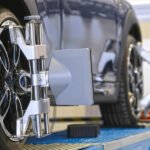

Essential Car Repair Skills Every Driver Should Know
Being stranded on the side of the road can be a stressful experience. Fortunately, there are a few basic car repair skills that every driver can learn to handle common situations and get back on the road quickly. Let’s break down some essential car repair skills you should know:
Changing a Flat Tire:
Changing a flat tire is a valuable skill that can spare you from a lot of inconvenience and wasted time. It’s essential to acquaint yourself with the tools required for the job: your car’s jack, lug wrench, and spare tire. Familiarizing yourself with the proper steps can make the process smoother. Begin by loosening the lug nuts, then safely jack up the car, remove the flat tire, and replace it with the spare. Don’t forget to securely tighten the lug nuts before lowering the car back down. If you’re unsure about any step, there are plenty of helpful instructional videos available online tailored to your specific car model.
Jumpstarting a Dead Battery:
Finding yourself with a dead battery is never fun, but knowing how to jumpstart your car can quickly get you back on the road. All you need are jumper cables and another vehicle with a good battery. Following the correct steps is crucial to avoid any damage to the electrical systems of both cars. While your car’s owner’s manual will provide specific instructions, the general process involves connecting the positive and negative cables in a particular order. If you’re unsure, there are plenty of helpful tutorials available online, including videos on platforms like YouTube.

Basic Fluid Checks:
Regularly monitoring your car’s fluids is key to keeping it running smoothly and preventing potential issues. Take the time to learn how to check essential fluids like engine oil, coolant, brake fluid, power steering fluid, and windshield washer fluid. Your owner’s manual is a valuable resource, providing details on where each reservoir is located and the recommended levels for each fluid. If you notice a low fluid level, you might be able to top it up yourself, but it’s important to keep an eye out for signs of a leak, which may require professional attention. By staying proactive with fluid maintenance, you can help ensure your car stays in optimal condition for the long haul.
Replacing Wiper Blades:
Worn-out wiper blades can leave streaks on your windshield, hindering visibility in bad weather. Replacing wiper blades is a quick and easy task that most drivers can do themselves. Purchase wiper blades that fit your car model and follow the instructions for removing the old blades and installing the new ones.
Understanding Warning Lights:
Understanding your car’s dashboard warning lights is like learning a new language—it can save you from a lot of headaches down the road. Take the time to familiarize yourself with common warning lights such as the check engine light, low oil pressure light, and brake system warning light. Knowing what these lights mean can help you take quick action to prevent further damage to your vehicle and ensure your safety on the road. While you may not always be able to fix the issue yourself, having a basic understanding of these warning lights will empower you to communicate effectively with your mechanic and get the necessary repairs done promptly
Conclusion:
Equipping yourself with essential car repair skills is like having a toolbox for life’s unexpected twists on the road. While learning these skills, always refer to your car’s owner’s manual for tailored instructions, and never push yourself beyond your comfort zone. When in doubt, it’s wise to leave complex repairs to the experts—qualified mechanics have the expertise to tackle intricate issues safely and effectively. By striking a balance between self-reliance and knowing when to seek professional help, you’ll navigate road bumps with confidence and peace of mind
Add a comment Cancel reply
Categories
- Car Gadgets (17)
- Car News (33)
- Car Reviews (43)
- Car Wars (7)
- Mechanicals (32)
- Uncategorized (2)
Recent Posts
About us

Popular Tags
Related posts


All About Wheel Balancing

Unlocking the Potential of Ethanol-Powered Cars








